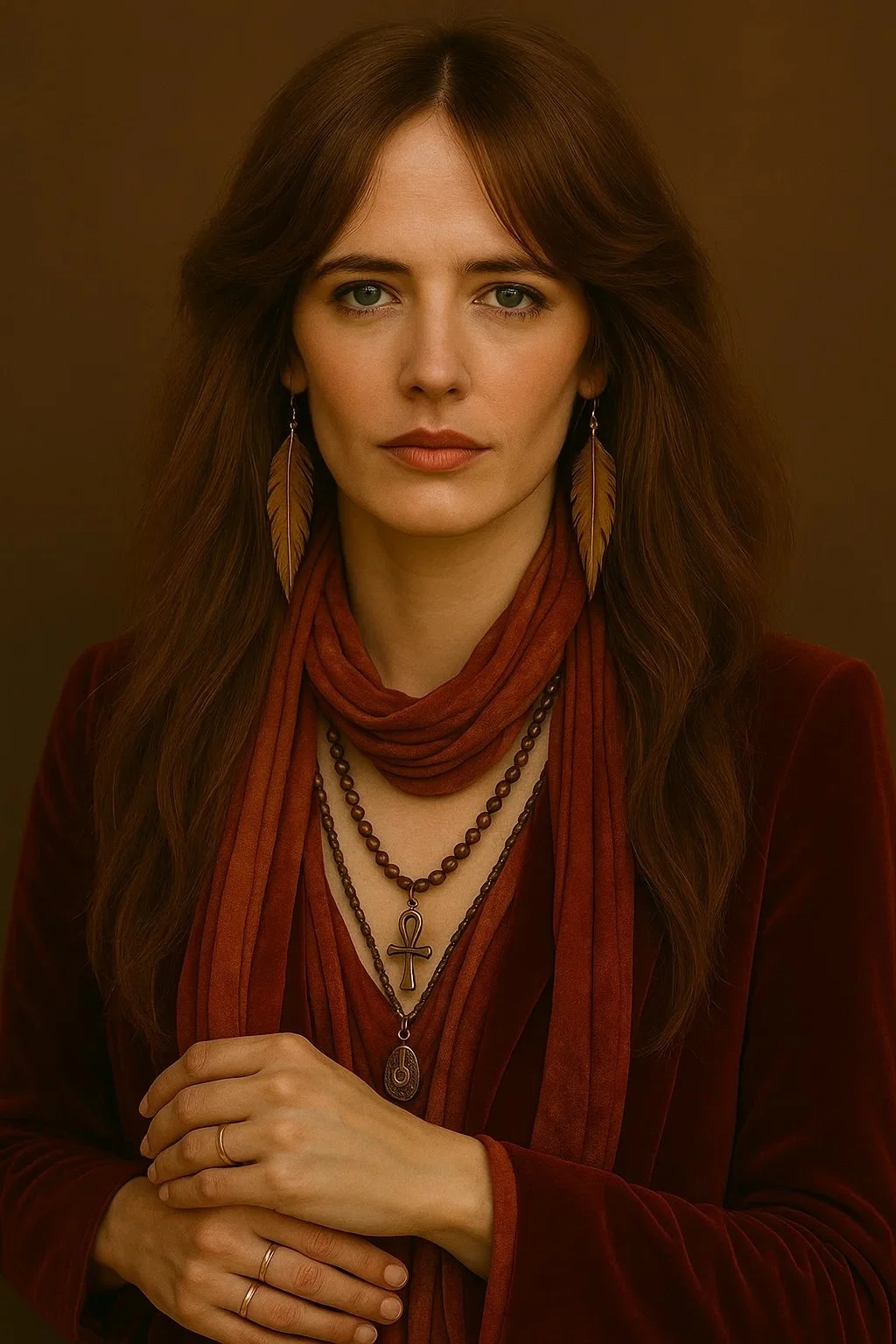The High Priestess of Lace, Space & Sound
When Mae Voce floated onto the stage with The Get Quick in 1975, she wasn’t just joining a band — she was stepping into the shape of a myth. Dressed in layers of antique lace, armfuls of bangles, and the long blonde waves of a goddess painted on a Victorian séance card, Mae didn’t sing songs — she conjured raptures.
Though classically trained on piano, vibraphone, and harp, Mae had been poised for a career in contemporary dance, choreographing avant-garde movement pieces in Manhattan lofts and European studios. Rock & roll, she once confessed, “felt too much like a boy’s game.” But fate, wrapped in velvet and bathed in dry ice, had other plans.
Invited in during a TGQ recording session as a guest improviser — a kind of sonic oracle — she enchanted not only the band but the room itself. Tapes from that night are said to hum even when not in rotation. By the end of the week, Mae was not just in the band — she was the axis around which the band turned.
On stage, she moved like smoke in a keyhole: delicate, hypnotic, impossible to grasp. Fans described her not as performing, but as channeling — her body a ritual instrument, her voice an elemental force. At its most intense, she delivered wordless wails that seemed torn from another realm, half-bird, half-banshee, all spellcraft. Her influences? “Tina’s fire, Janis is truth... but also the wind, the sea, and whatever lives just beyond the veil.”
But it wasn’t just her voice — it was the Mae Voce look that lit fashion imaginations afire. Billowing chiffon, diaphanous shawls that danced like ghostly limbs, antique lace bodices, peacock-feather capes — she dressed like Stevie Nicks’ elder sister, who spent a little too long in Marrakech. Magazines breathlessly tried to capture it: “gypsy-glam,” “vintage siren,” “witchcore.” But Mae didn’t follow fashion — she exhaled it like incense smoke.
And the Voce Ankh — a talisman worn low over her heart, forged in silver by famed jeweler Henri David of Philadelphia. In 1978, replicas were quietly gifted to inner-circle friends — and have since been spotted on everyone from Julie Christie to Princess Stéphanie of Monaco. Some claim the ankhs were enchanted. Others swear they were part of a larger “circle of protection” Mae wove around the band during its most tumultuous phase.
Her departure in 1979 shocked the faithful, but it was classic Mae: poetic, unexpected, and tinged with mythology. She left to marry Italian film producer Claudio Uffizi — though some whisper the ceremony was also a “final rite” of sorts — and went on to star in a handful of gauzy Franco-Italian cinema pieces (cult favorites in certain cinephile circles).
Today, Mae Voce lives in quiet semi-seclusion on the isle of Capri, surrounded by lemon groves, cats, and stories. Whether she retired from performance or simply returned to the source is anyone’s guess.
But one thing is certain: no one ever really leaves the temple once they’ve sung its name.
— Mark Question, 2007
